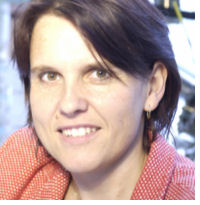

![]()
 |
|
IEEE Magnetics Society
| |
Tuesday, March 23rd, 2010
Heusler compounds: Multifunctional materials for spintronicsProf. Claudia Felser
|
| Copy Of Presentation |
 Claudia Felser earned her diploma in chemistry at the University of Cologne in 1989 and completed her doctorate in physical chemistry there in 1994. After postdoctoral fellowships at the MPI in Stuttgart and the CNRS in Nantes (France), she joined the University of Mainz. She was a visiting scientist at Princeton University (USA) and a visiting professor at the University of Caen (France). She became a full professor at the University of Mainz in 2003. She is the chair of the DFG research group "New Materials with High Spin Polarization" and is the director of the Graduate School of Excellence "Materials Science in Mainz" of the German Science Foundation (DFG). She was honored with the order of merit "Landesverdienstorden" of the state Rhineland-Palatinate for the foundation of a lab for school students at the University of Mainz.
Claudia Felser earned her diploma in chemistry at the University of Cologne in 1989 and completed her doctorate in physical chemistry there in 1994. After postdoctoral fellowships at the MPI in Stuttgart and the CNRS in Nantes (France), she joined the University of Mainz. She was a visiting scientist at Princeton University (USA) and a visiting professor at the University of Caen (France). She became a full professor at the University of Mainz in 2003. She is the chair of the DFG research group "New Materials with High Spin Polarization" and is the director of the Graduate School of Excellence "Materials Science in Mainz" of the German Science Foundation (DFG). She was honored with the order of merit "Landesverdienstorden" of the state Rhineland-Palatinate for the foundation of a lab for school students at the University of Mainz.
Prof. Felser has written more than 150 articles and been granted several patents. Her recent research focuses on the design of new materials for spintronics and energy technologies such as solar cells, thermoelectric materials, and superconductivity. The materials under investigation are Heusler compounds and compounds with related structure type.
Contact:
Johannes Gutenberg University of Mainz
55128 Mainz, Germany
Return to SCV Magnetics Society Homepage
SCV Magnetics Society Webmaster: Tom Gardner (SCVMagSociety@gmail.com)
Last updated on